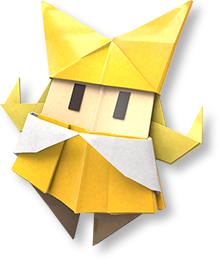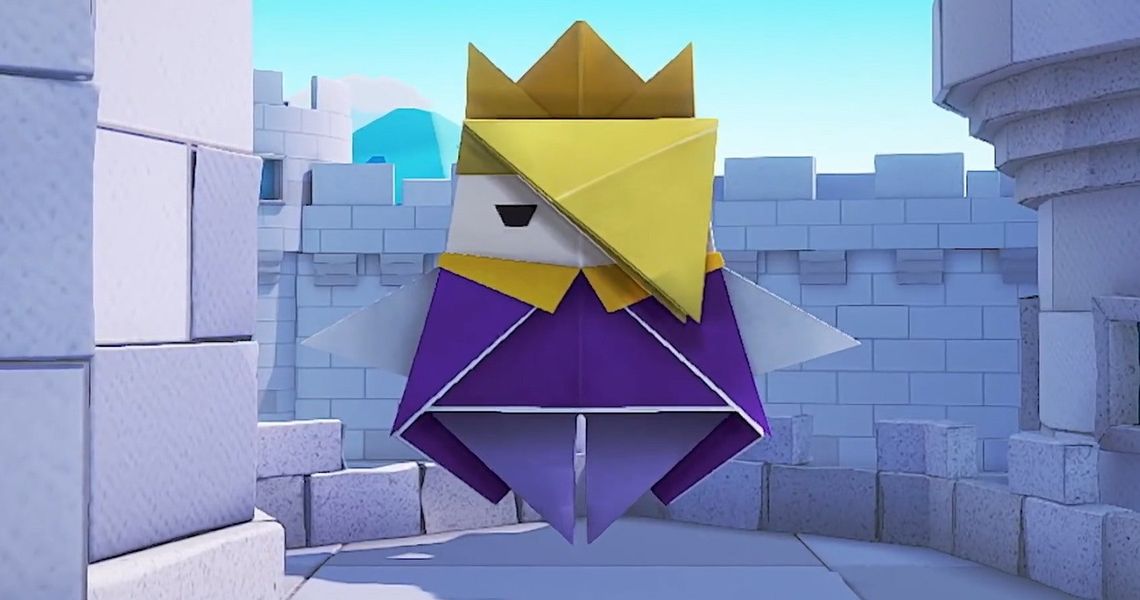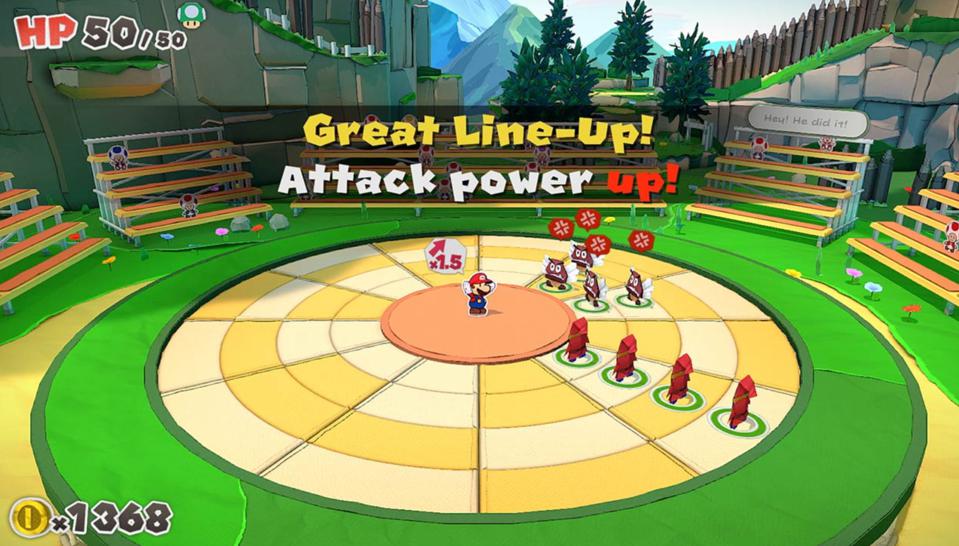
The battles have a lot in common with past games.
A WORLD MADE OF PAPER
While certainly not the primary complaint leveled against recent series entries, the push for further and further into emphasizing the paper-ness of everything in Paper Mario's world has been an elements that several vocal fans have decried. I personally haven't minded it much. I praised the diorama look of Color Splash in particular, and liked that it carried on the efforts of games like Kirby's Epic Yarn and Yoshi's Wholly World to put an extra bit of creativity into something as basic as what walls, floors and stairs look like.
Still, Paper Mario was not originally intended to draw y our attention to the fact that the characters and the world they inhabit are literally made out of stuff from an elementary teacher's supply drawer. We mentioned this a few pages ago, but the first name for Paper Mario was "Mario Story" - the paper look would have felt at home in a children's book. The first game gave buildings in the environment a pop-up book effect to further drive this home. Paper Mario was a story being told from a book first and foremost - the characters and what happens to them were the point, not the pages they were "printed" on.
Paper Mario: The Origami King, in this regard, takes one step forward and one step back. If you thought that Color Splash leaned into the paper aesthetic too much, you'll be happy to see the environments in this new sequel dial that back. They're not screaming "Hey, this is all made of paper you know!" all the time. On the other hand,, the villains being an army of origami soldiers is the most paper-emphasizing thing the series has ever featured. So there's that.
Still, Paper Mario was not originally intended to draw y our attention to the fact that the characters and the world they inhabit are literally made out of stuff from an elementary teacher's supply drawer. We mentioned this a few pages ago, but the first name for Paper Mario was "Mario Story" - the paper look would have felt at home in a children's book. The first game gave buildings in the environment a pop-up book effect to further drive this home. Paper Mario was a story being told from a book first and foremost - the characters and what happens to them were the point, not the pages they were "printed" on.
Paper Mario: The Origami King, in this regard, takes one step forward and one step back. If you thought that Color Splash leaned into the paper aesthetic too much, you'll be happy to see the environments in this new sequel dial that back. They're not screaming "Hey, this is all made of paper you know!" all the time. On the other hand,, the villains being an army of origami soldiers is the most paper-emphasizing thing the series has ever featured. So there's that.

